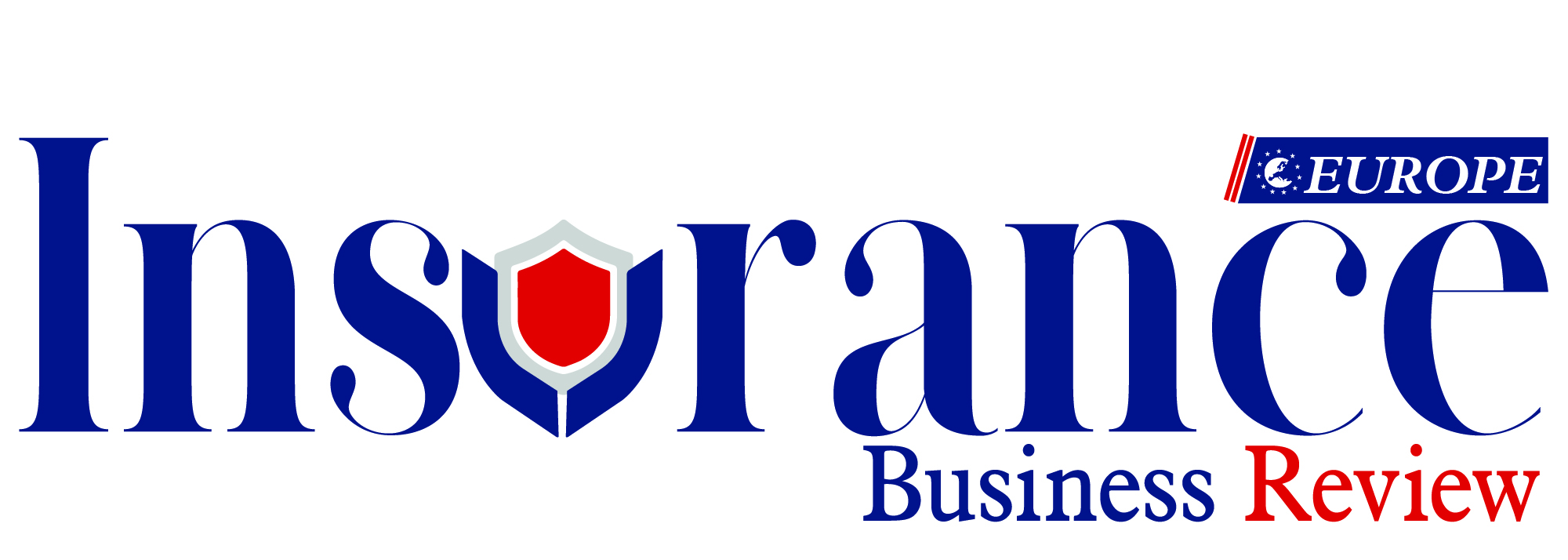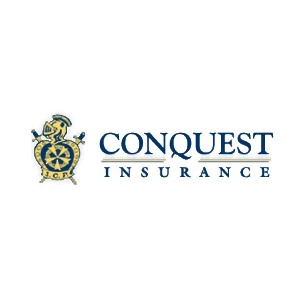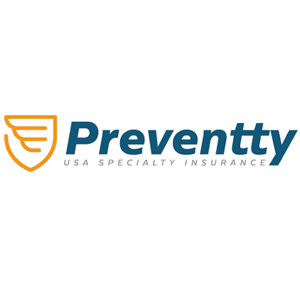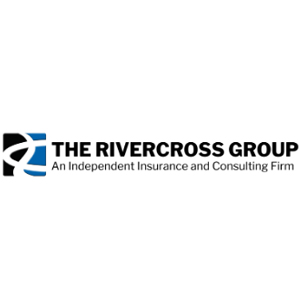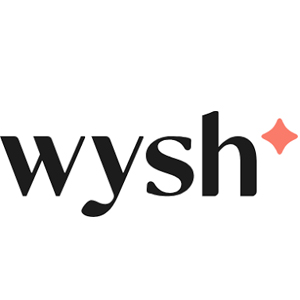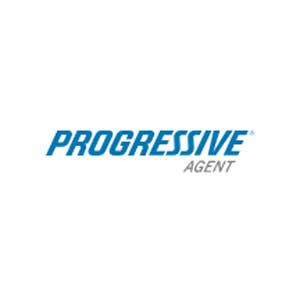\\\\\\\\\\ Top Insurance Agency \\\\\\\\\
-
Albatross Insurance
Albatross Insurance is a full-service independent agency that offers comprehensive insurance coverage for homes, vehicles, and businesses. With deep expertise and a personalized, full-service approach, the company simplifies insurance and ensures clients are truly protected—not just meeting the minimums.
-
Conquest Insurance Agency
Conquest Insurance Agency is a full-service commercial insurance firm specializing in agriculture and crop coverage. By combining deep operational insight with tailored risk-mitigation strategies, Conquest helps growers protect revenue, stabilize cash flow, and build resilience—ensuring they’re prepared for whatever each season brings.
-
LG Insurance Agency
LG Insurance Agency is a trusted, client-focused firm with over 15 years of experience delivering personalized insurance and risk management solutions. Specializing in business, personal, cyber and professional liability coverage, it emphasizes proactive risk reduction to minimize claims and lower clients’ total cost of risk across diverse industries.
-
Main Line Benefits
Main Line Benefits prioritizes agent empowerment, offering flexible career pathways, equity participation, and top-tier support to agents working with them. It provides growth opportunities, industry-leading compensation and advanced training while fostering a culture of teamwork, integrity, and long-term financial success.
-
Preventty
Preventty USA Specialty Insurance is a leading independent insurance agency serving clients since 2006, with experience in commercial auto, health and life insurance. With more than 5,000 satisfied clients and licenses in 26 states, the company is renowned for being a trusted option in the U.S. insurance market.
-
The RiverCross Group
The RiverCross Group cuts through the noise with smart, people-first benefits strategies. From compliance to communication, it helps businesses slash costs, boost retention, and stay ahead delivering big-agency expertise with small-agency heart.
-
Wysh
Wysh is a pioneer in the field of embedded financial protection, working alongside banks, credit unions, and fintech companies to offer life insurance as an automatic benefit to their customers. The company doesn’t fit neatly into the traditional term life insurance space.
-
Atlas Insurance
Atlas Insurance Agency, Hawaii’s largest insurance agency, offers tailored solutions for businesses and individuals. With expertise across various industries, it provides competitive coverage options through strong local and global partnerships, ensuring clients receive comprehensive risk management, employee benefits, and personalized service.
-
Progressive Insurance
Progressive Insurance partners with over 40,000 independent agents nationwide to offer personalized insurance solutions. Specializing in auto, home, motorcycle, and commercial insurance, the company provides customized coverage options with expert guidance, ensuring clients receive the best protection at competitive prices.
-
Smart Choice Agents
Smart Choice® is a fast-growing network of over 10,000 independent agencies, offering access to more than 120 top-rated carriers. With no fees, low production requirements, and competitive commissions, it empowers agents with the tools, training, and support to grow their business and succeed.
-
Tompkins Insurance
Tompkins Insurance Agencies provides tailored insurance solutions for families and businesses, offering over 100 years of expertise. Representing more than 50 top insurance companies, it delivers personalized service, competitive pricing, and 24/7 support, ensuring clients receive the best protection and service available.
More in News
Maximizing Impact Through Agility in Reinsurance Advisory Services
Thursday, October 09, 2025
Fremont, CA: In today’s fast-paced and increasingly complex global risk environment, reinsurance is a key pillar for stabilizing the insurance sector and bolstering economic resilience. For cedents—the primary insurers—successfully navigating this landscape often depends on expert reinsurance advisory services. With rapid technological advancements, shifting regulatory requirements, and unpredictable global events, agility in these advisory services has never been more essential. The Imperative for Agility in Reinsurance Advisory The accelerating pace of risk evolution demands swift, forward‑looking strategies. Climate change introduces unprecedented weather-related exposures, cyber threats advance at an alarming rate, geopolitical tensions generate sudden market volatility, and global health crises can reshape entire industries almost overnight. Advisors must now rapidly assess these emerging risks, evaluate their impact on cedents’ portfolios, and craft innovative risk transfer solutions in real time—anything less risks leaving clients exposed to significant financial shocks. Equally transformative is the proliferation of data and advanced analytics. In an era of vast datasets—ranging from granular policyholder information to sophisticated catastrophe models and economic forecasts—agile advisors leverage artificial intelligence and machine learning to distill insights, quantify exposures with precision, and anticipate trends. This data-driven approach enables the design of highly customized, forward-thinking reinsurance programs. Adding to the complexity is an ever-shifting regulatory landscape. New solvency requirements, privacy mandates, and capital rules frequently emerge, often with cross‑border implications. Advisors must be proactive in helping cedents navigate these requirements, ensuring compliance while optimizing capital allocation to maintain a competitive edge. Simultaneously, the rise of Insurtech is reshaping the market with new business models, distribution channels, and risk transfer mechanisms such as parametric insurance and blockchain‑enabled platforms. Advisors who adopt an agile mindset can integrate these innovations into reinsurance structures, offering clients solutions that are more efficient, transparent, and aligned with emerging risks. Growing competition and heightened client expectations demand speed, responsiveness, and foresight. Cedents increasingly value advisors who not only provide technical expertise but also anticipate challenges and deliver timely, actionable strategies. In this evolving environment, agility is no longer a differentiator—it is a prerequisite for success. Manifestations of Agility in Reinsurance Advisory Agility enables rapid risk assessment and structuring, where advisors swiftly evaluate a cedent’s portfolio against emerging risks and design optimal reinsurance frameworks—be they traditional, facultative, or alternative risk transfer (ART) solutions—with speed and precision. It also drives market engagement, as advisors proactively interact with a broad spectrum of reinsurers, remain attuned to shifting appetites, and leverage relationships to secure favorable terms in volatile market conditions. Agility fosters iterative solution development, moving beyond rigid, standardized approaches to continuously refine reinsurance programs in response to market feedback and changing client needs. The seamless adoption of advanced technologies—spanning data analytics, modeling, communication, and process automation—further enhances efficiency and delivers sharper insights. Internally, cross-functional collaboration among actuarial, legal, broking, and analytics teams ensures that complex challenges are addressed with diverse expertise. The strategic importance of agility in reinsurance advisory services cannot be overstated. It is no longer a desirable trait but a fundamental requirement for success. Companies that embrace agility, invest in technology, and empower their teams will effectively guide clients through global risks, ensuring long-term resilience. For cedents, partnering with an agile reinsurance advisor is a strategic imperative that directly contributes to their financial stability and competitive advantage.
Critical Areas Where Algorithmic Underwriting Drives Positive Outcomes
Wednesday, October 08, 2025
Fremont, CA: The insurance industry is increasingly adopting algorithmic underwriting to improve the customer experience and streamline operations through more accurate risk assessments and quicker decision-making. Analytical models are used in algorithmic underwriting to automate the process or offer underwriters insights. Underwriting can be entirely or partially automated for more uniform risks. In five critical areas, algorithmic underwriting significantly improves the insurance sector: Process Efficiency Algorithmic underwriting decreases processing times by as much as 50%, streamlining operations, speeding up testing, and making complicated decision-making systems more straightforward to maintain by automating the underwriting process. Insurers can raise premiums without incurring extra operating expenses because algorithmic underwriting's automated procedures can also manage a 25% rise in the number of applications assessed. Accuracy The accuracy of risk assessments can be enhanced through the analysis of larger data sets. Such analyses assist in identifying patterns and correlations that human underwriters may overlook. This augmentation of underwriters' insights and judgments can help minimize errors in risk assessments and facilitate easier fraud detection, with estimates suggesting that fraud losses could decrease by as much as 30% for certain insurance companies. Price Improved pricing decisions stem from enhanced risk assessments, as algorithmic underwriting customizes premiums to align with individual risk profiles, increasing customer satisfaction and competitiveness. It also allows for dynamic pricing, which adjusts premiums in real-time based on fluctuating risk factors, improving underwriting profitability by around 20%. Proactive Risk Management Moreover, algorithms enable insurers to proactively identify emerging risks and adapt their underwriting and risk management strategies accordingly. This adaptability can help mitigate potential losses, lower loss ratios, and enhance portfolio performance. Customer Experience Through algorithmic underwriting, decisions regarding coverage eligibility, pricing, and personalized offers can be made instantly or nearly. By leveraging predictive and prescriptive analytics, insurers can present real-time, context-driven offers, making insurance more accessible and relevant to the specific needs of individual customers. This approach also helps reach customers or segments that previous underwriting methods may have underserved.
Insurance Strategies for Latin America's Infrastructure Future
Wednesday, October 08, 2025
Fremont, CA: Infrastructure development is a critical engine for economic growth, job creation, and improved quality of life across Latin America. However, the region’s ambitious infrastructure pipeline is often hampered by significant risks, deterring essential private investment. Governments, in partnership with the private sector, have a powerful yet frequently underutilized tool at their disposal to bridge this investment gap: insurance and risk transfer mechanisms. By strategically deploying insurance solutions, Latin American governments can substantially reduce project risk, making them more attractive to institutional and private investors and ultimately fostering a more resilient and sustainable infrastructure landscape. Strategic Insurance Mechanisms for De-Risking Governments can leverage a broad spectrum of insurance and risk transfer instruments to mitigate political, financial, and climate-related risks while catalyzing private capital for infrastructure development. Political Risk Insurance (PRI) and guarantees are crucial in protecting investors and lenders from non-commercial risks, including expropriation, currency inconvertibility, non-payment under government contracts, and political violence. By collaborating with Multilateral Development Banks (MDBs) and specialized private insurers to co-develop or backstop PRI products, governments can signal strong policy commitment, enhance credibility, and reduce premium costs for private sector partners. Similarly, catastrophe and climate risk transfer mechanisms—such as participation in sovereign risk pools like the Caribbean Catastrophe Risk Insurance Facility (CCRIF SPC), the issuance of catastrophe bonds (Cat Bonds), and the use of parametric insurance—enable governments to secure rapid post-disaster liquidity, transfer high-severity risks to global investors, and ensure faster infrastructure recovery following natural disasters. In parallel, performance and credit enhancement tools strengthen the financial viability and performance reliability of infrastructure projects. Subnational development banks (SDBs), often in partnership with MDBs, can offer guarantees or risk-sharing mechanisms to mitigate the credit risk of local government off-takers in Public-Private Partnerships (PPPs), unlocking critical financing for municipal infrastructure. Energy Savings Insurance (ESI) products also guarantee expected energy savings for efficiency projects, reducing lender risk and encouraging investment in green infrastructure. The Flow of Information and Actionable Steps for Governments To maximize the impact of insurance as a de-risking tool, governments must adopt a structured and integrated approach spanning from risk identification to resilience building. This process begins with a comprehensive risk mapping of public assets and pipeline projects, particularly those that are exposed to climate and disaster risks. By leveraging data-driven modeling and parametric triggers, governments can prioritize high-risk projects for insurance, gaining clarity on exposure and coverage needs. Establishing a robust policy and enabling framework is equally crucial—clear legal and regulatory structures for public-private partnerships (PPPs) and risk-sharing, combined with the integration of disaster risk reduction (DRR) into public investment planning, create an environment in which political risk insurance (PRI) and multilateral development bank (MDB) guarantees are both sound and enforceable, thereby strengthening investor confidence and transparency. Early engagement with the global insurance and reinsurance markets, as well as MDBs, enables the co-design of tailored PRI, credit guarantees, and catastrophe bonds (Cat Bonds). At the same time, standardizing contracts helps optimize insurance costs and effectively transfer risk to capable parties. In the implementation phase, governments should secure appropriate risk transfer instruments and reinvest insurance or Cat Bond savings into DRR measures and resilient infrastructure design. Paying premiums for sovereign risk pool memberships and utilizing environmental and social insurance (ESI) for smaller-scale green projects can further enhance financial stability, accelerate post-disaster recovery, and ensure long-term infrastructure resilience. For Latin American governments, insurance is more than just a financial safety net; it is a catalytic investment tool. By systematically applying sovereign risk transfer mechanisms to address high-severity natural hazards and employing commercial and MDB-backed PRI to mitigate political uncertainty, governments can directly address the primary anxieties of private investors. This strategic use of the insurance sector not only de-risks individual projects but also transforms the entire Latin American infrastructure ecosystem, creating a more stable, resilient, and attractive destination for long-term, sustainable capital.
InsurTech in LATAM: Bridging Geography, Trust, and Efficiency
Wednesday, October 08, 2025
Fremont, CA: The insurance industry in Latin America (LATAM) is standing at an inflection point. Characterized by low penetration rates but high-profitability potential and a rapidly expanding middle class, the region is ripe for a digital revolution. This transformation is nowhere more evident and impactful than in the claims and loss adjustment process, where Artificial Intelligence (AI), drones, and digital platforms are moving from disruptive concepts to essential operational tools. The Catalyst: A Market Primed for Digital Evolution Latin America presents a distinctive landscape for InsurTech adoption, characterized by high smartphone and internet penetration, alongside historically low insurance uptake, resulting in a significant protection gap. To effectively engage the mass market, particularly the rapidly expanding middle class, insurers must address longstanding barriers related to cost, complexity, and consumer distrust. Digital transformation, especially within the claims experience, provides a compelling solution. Consumers in the region, already familiar with digital financial services through FinTech, now expect insurance processes that are faster, more transparent, and less reliant on manual intervention. At the same time, insurers face growing pressure to enhance operational efficiency and reduce substantial loss-adjusting expenses—challenges that are well-suited to digital tools and automation. Latin America’s vast geography and diverse infrastructure further underscore the need for digital innovation, as traditional, in-person claims assessments often prove time-consuming and prohibitively costly. The Trio of Transformation: AI, Drones, and Digital Claims AI and Machine Learning are transforming claims processing by automating manual tasks and enabling intelligent decision-making. AI-powered chatbots and virtual assistants now manage the First Notice of Loss (FNOL), capturing claim details, providing instant feedback, and routing cases efficiently. Machine learning enhances fraud detection by analyzing large datasets—such as policy histories, claimant behavior, and external information—to identify anomalies more quickly and accurately, thereby reducing financial leakage. AI-driven image analysis automates simple claim assessments, while generative AI helps summarize complex claim files and draft clear, empathetic communications with policyholders. Meanwhile, drones and remote sensing technologies revolutionize loss assessment, overcoming logistical barriers, particularly in property, agriculture, and disaster-prone regions. They quickly capture high-resolution imagery of damaged areas, support aggregate loss estimation, and provide detailed, 3D, auditable documentation for routine inspections, cutting time, cost, and safety risks. Digital claims platforms and self-service tools form the customer-facing layer that unites these innovations, delivering greater transparency, efficiency, and convenience. Through mobile apps and web portals, policyholders can upload documents and images, enabling faster processing and feeding AI systems with high-quality data. Real-time claim tracking enhances customer satisfaction, reducing dependence on the contact center. Additionally, emerging technologies such as digital twins and 3D modeling are reshaping collaboration among adjusters, contractors, and insurers by creating shared, accurate digital replicas of damaged properties, which enhance repair precision and cost estimation. While technology continues to automate routine tasks, it simultaneously enhances the role of the human loss adjuster. Rather than being replaced, adjusters are evolving from data collectors and processors into high-value consultants who bring critical judgment, empathy, and strategic insight to the claims process. Their future responsibilities will increasingly center on managing complex claims involving structural damage, business interruption, liability disputes, and intricate policy interpretations—areas where human discernment and negotiation remain indispensable. Additionally, adjusters will play a vital role in interpreting and overseeing data derived from AI and drone technologies, ensuring that decisions are both efficient and ethically sound while maintaining compliance across automated processes. Equally important, they will act as advocates for customers, providing empathetic communication and support in high-severity or emotionally charged loss situations, thereby reinforcing trust and strengthening client relationships. The convergence of AI, drones, and end-to-end digital platforms marks the arrival of InsurTech in Latin America's claims sector. This digital trifecta promises a future of adjustment that is faster, more accurate, and more cost-effective than ever before, creating an opportunity to close the region's protection gap. For the insurance industry in LATAM, this transformation is not a luxury—it is the prerequisite for sustainable growth and a non-negotiable step toward meeting the evolving demands of the 21st-century customer.
Strategies for Navigating Third-Party Risks in Insurance
Tuesday, October 07, 2025
Fremont, CA: Third-party partnerships are essential to delivering comprehensive services in the modern insurance landscape. Insurers frequently collaborate with vendors, brokers, claims adjusters, and technology providers, creating a complex web of interdependencies. While these partnerships can enhance efficiency, scalability, and customer satisfaction, they introduce significant third-party risks. Navigating these risks requires a strategic approach that combines robust risk assessment, strong governance frameworks, and continuous monitoring. The primary challenge in managing third-party risks is the lack of direct control over external entities. For insurers, this means relying on partners to adhere to regulatory standards, maintain cybersecurity protocols, and deliver promised services. A failure in any of these areas can lead to reputational damage, financial loss, or regulatory penalties. To mitigate these risks, insurers must conduct comprehensive due diligence before entering into any partnership. The process should include evaluating third parties' financial health, operational resilience, and compliance history. Governance plays a critical role in third-party risk management. Insurers must implement formal policies and procedures to govern their relationships with third parties. These frameworks should outline roles and responsibilities, define performance metrics, and specify reporting requirements. Contractual agreements should include clauses that address liability, data protection, and compliance with industry standards. Insurers should ensure that third-party partners align with their risk appetite and ethical values. Another significant aspect of managing third-party risks is cybersecurity. With the increasing digitization of the insurance industry, third-party systems are often integrated with an insurer's internal infrastructure, creating potential vulnerabilities. Cyberattacks on third-party vendors can lead to data breaches, compromising sensitive customer information. Insurers should conduct thorough cybersecurity assessments of their partners, ensuring they employ robust encryption, multi-factor authentication, and regular vulnerability testing. Insurers must have contingency plans in place to respond to cybersecurity incidents swiftly. The platforms can track key performance indicators, flag deviations, and provide actionable data to mitigate risks promptly. Regulatory compliance is a cornerstone of third-party risk management in the insurance sector. Insurers are subject to stringent regulations that mandate oversight of their third-party relationships. To ensure adherence, insurers must stay updated on evolving regulatory requirements and incorporate them into their third-party risk management programs. Training and awareness programs for employees and partners can further enhance compliance efforts. Insurers can navigate these risks effectively by conducting thorough due diligence, implementing robust governance frameworks, strengthening cybersecurity measures, and continuously monitoring partner performance. Staying vigilant about regulatory compliance ensures that third-party partnerships do not compromise the insurer's operational integrity. With a strategic and structured approach, insurers can harness the benefits of third-party collaborations while minimizing potential downsides, fostering a resilient and trustworthy ecosystem.
Telematics Insurance Transforming Personalized Auto Coverage in the US
Monday, October 06, 2025
FREMONT, CA: Telematics insurance, or usage-based insurance (UBI), is reshaping the insurance landscape through technology-driven, personalized coverage. Using telematics devices—like smartphone apps or plug-in tools—it tracks driving behaviors such as speed, braking, acceleration, and mileage. This data allows insurers to better assess individual risk and adjust premiums based on real-world driving habits. Telematics insurance operates through a systematic process designed to enhance policyholder experience and insurer efficiency. Initially, policyholders install a telematics device, a plug-in device or a smartphone application in their vehicles. This device continuously gathers data on various aspects of driving behavior, including speed, braking, acceleration, mileage, and the time of day. Insurance companies then analyze this data to assess the risk profile of each policyholder. Based on this analysis, insurers can offer personalized premiums that reflect individual driving habits; safe drivers may benefit from significant discounts, while those exhibiting riskier behavior may incur higher premiums. The advantages of telematics insurance extend to both policyholders and insurers. Telematics insurance promotes fairer and more personalized premiums by providing a more accurate assessment of individual risk. Safe drivers can enjoy reduced costs, while those with riskier driving patterns may face increased rates. Telematics devices often deliver real-time feedback on driving habits, fostering safer driving practices; some devices even include features such as collision alerts and roadside assistance. Furthermore, the data collected can assist in detecting and preventing fraudulent claims by providing precise information about accidents and vehicle usage. Ultimately, telematics insurance enhances the customer experience by offering greater transparency and real-time insights into driving behavior and potential savings. Device types utilized for vehicle data collection include plug-in devices, smartphone applications, and integrated telematics systems. Plug-in devices are small, portable units that connect to a vehicle's OBD-II diagnostic port. Smartphone apps leverage the phone's sensors to gather driving data, while integrated telematics systems are embedded in newer cars, allowing for continuous data transmission to insurers. The data collected encompasses various aspects of driving behavior, including speed, acceleration, braking, cornering, and sudden maneuvers. Additionally, it tracks mileage, providing insights into total distance traveled and daily usage. Time of day is recorded to differentiate between driving during peak hours and off-peak periods, and location data identifies whether the vehicle operates in urban or rural settings. Ongoing technological advancements and heightened consumer awareness characterize the future of telematics insurance. As the industry evolves, innovative telematics applications are anticipated to continue to emerge. These advancements include predictive analytics, which utilizes sophisticated analytical tools to identify potential risks and provide proactive solutions. Additionally, real-time feedback mechanisms are expected to enhance driving safety by offering immediate insights into driving behaviors. Integrating data from connected cars will refine risk assessment and enable more personalized insurance offerings. Telematics insurance marks a significant progression within the insurance sector, fostering a more personalized, equitable, and transparent approach to coverage. By embracing technology and leveraging data-driven insights, insurers can enhance customer service and create a safer driving environment.
